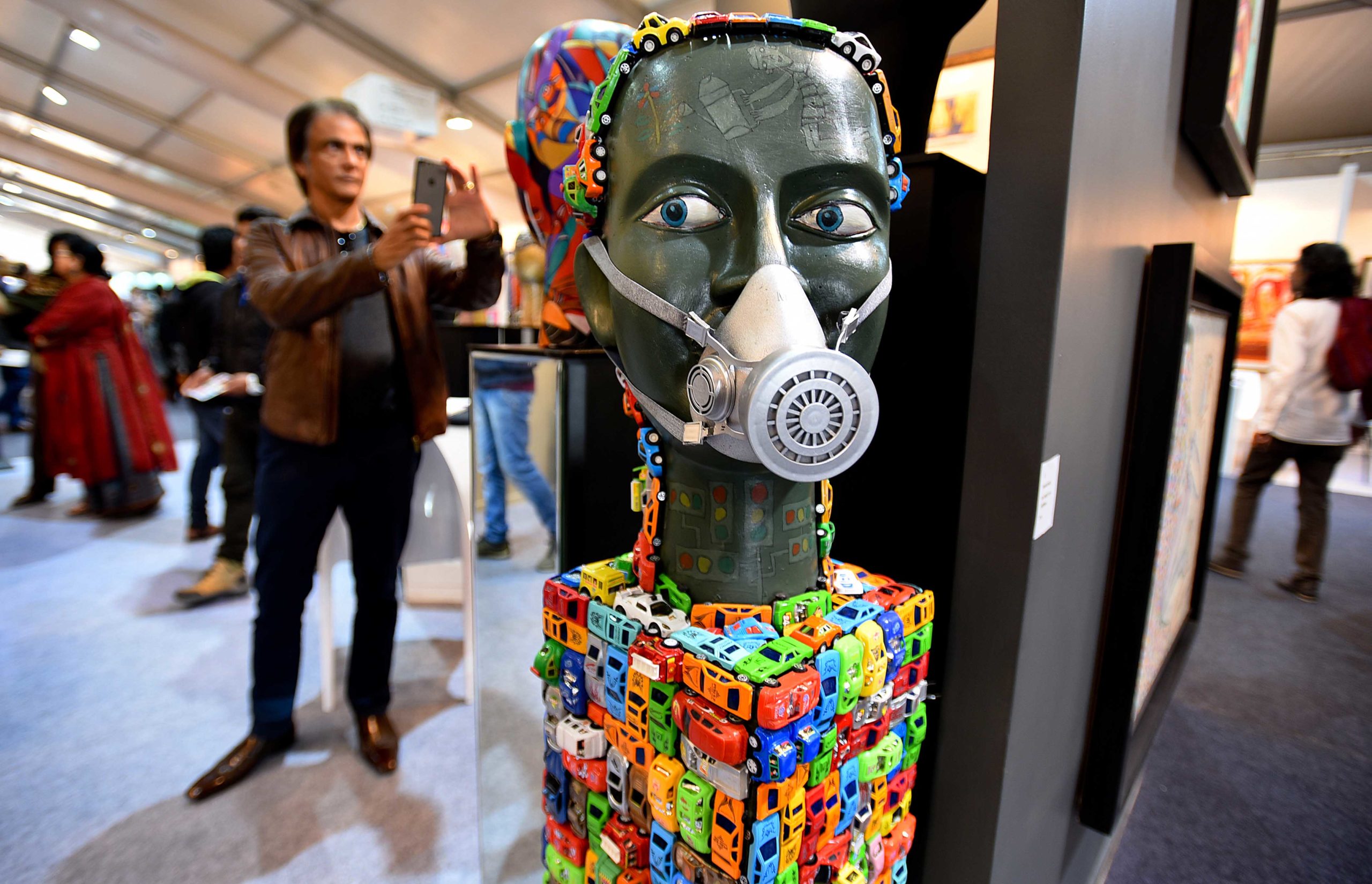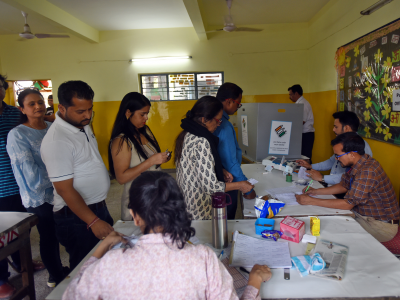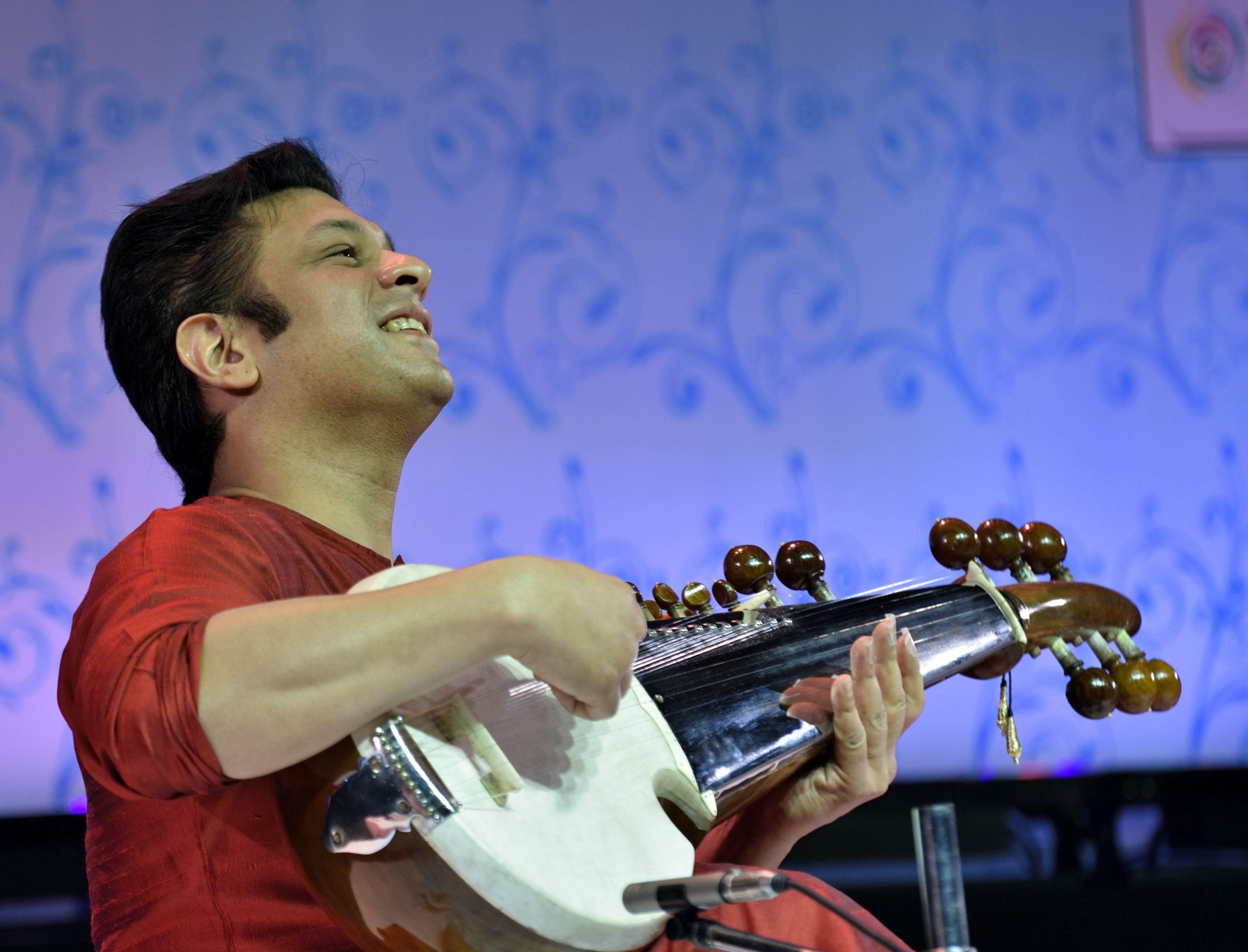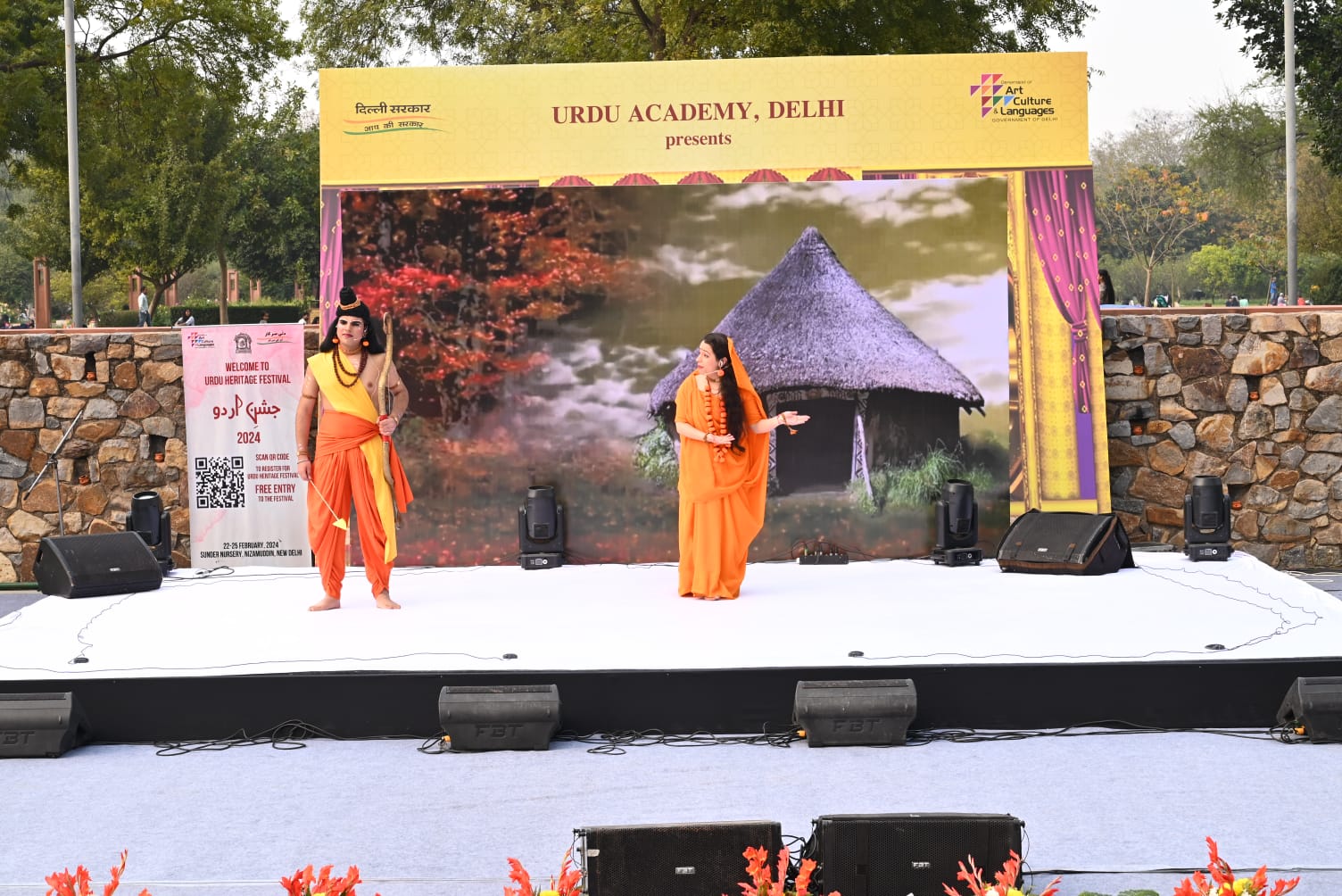Investment in Modern Masters has taken a hit due to the economic slowdown but contemporary art with affordable price tags is finding favour with younger buyers
FROM JOB loss to shutting down of industries, the economic slowdown that the country is facing has been continually making headlines since 2018. With a six-year low GDP growth rate of 4.7 per cent, this crisis has had its adverse effects across all sectors, including the visual arts industry.
Despite the consumption slowdown blues, interviews of several gallery owners across Delhi say their business is slowly recovering and new trends are being observed.
The recently concluded India Art Fair, one of the leading platforms for contemporary and modern art from South Asia, is perhaps the best place to understand the current art scene in terms of sales. The twelfth edition has recorded strong sales with exhibitors reporting new collectors entering both the contemporary and modern markets.
As per India Art Fair data, this year the exhibitors’ return rate was as high as 86 per cent. The gallery return rate has been recorded at 89.5 per cent. Even in terms of number of participants, which was 76 in 2019, the fair saw an increase to 81 exhibitors this edition.
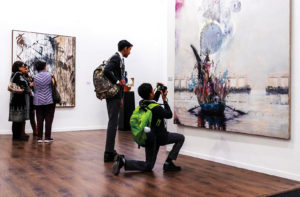
GOOD RETURNS
Some of the leading contemporary art spaces and galleries have shared that they notched up good sales. “We have had yet another fantastic year at India Art Fair and met many collectors both from India and around the world from the first day. We are overwhelmed with the response and are pleased to confirm that we have made positive sales of works by our artists in a diverse price range,” says Ridhi Bhalla, Director of Blueprint12 Gallery.
Adding to this Renu Modi, director of Gallery Espace said, “For us, it has been a good fair in terms of sales…”
A similar sentiment was expressed by Amal Allana, Director of Art Heritage: “The IAF was an overall positive experience for Art Heritage, with a lot of credit going to the organisers for bringing in young and established collectors, as well as diversifying the galleries in attendance. The Fair itself is now a recognisable event in the region and an important contributor to the overall health of the art market sector, which we feel has built tremendous momentum over the last few years, fuelled by contributions from multiple organisations and the gallery community as a whole.”
While this indicates that the market is recovering, one trend that is noteworthy is the increasing interest in contemporary artworks that are fairly more affordable when compared with Modern masterpieces, like that of MF Hussain, SH Raza, Krishen Khanna and FN Souza, to name a few.
ICONIC ARTWORKS REMAIN UNSOLD
The economic crisis, however, had left its dent on international auction house Sotheby’s second auction in India. The auction saw one of the most coveted paintings and highlights of the event – a painting of modern master VS Gaitonde — remaining unsold. It was priced at Rs 21.4 crore. In fact, around 20 per cent of major artworks remained unsold at the auction due to high price tags.
The auction managed a sales figure of only Rs 23.8 crore, as against the expected realisation of Rs 37 crore. “The auction showed there’s interest for works that are fresh to the market and well-priced,” the statement from Sotheby said, striking an optimistic note.
Anubhav Nath of Ojas Art Gallery, a prominent contemporary art space in the city, has also observed that works of notable artists remain unsold in his gallery.
He agrees that the economic slowdown has affected art just as it has affected all sectors — especially since buying art is seen as an indulgence. “There’s definitely been a slowdown, since it’s a luxury purchase. Sales are down. People are looking for discounts. The slowdown started in 2018 and has been gradual,” he adds.
MOVE OVER, MODERN
Having been a part of the art market for several years now, Bhavna Kakkar, Director of Latitude Gallery 28, has seen several ups and down in the art scene. Slowdown in the sale of art is not new for her, but the one change that she has observed now is the shift of people’s interest in buying more contemporary art rather than Modern art.
“Investors who have been around for a very long time have not been very active now, but younger people who want to collect art are showing interest. These generations are not going by the works of Modern Masters. It is the younger artists whose work is affordable, that are doing well. In a way, there is a new breed of people that have come up that are beginning to collect art.”
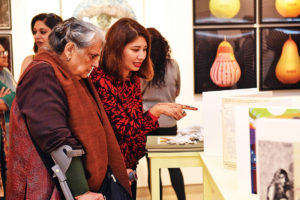
Kakkar sees a sharper, younger audience now with eclectic tastes coming on the horizon. “The risk-taking factor among Indian buyers has really gone up. The younger people do not really care about whether the work is Souza’s or Raza’s. They read up more about the art and understand the concept behind it if they find something interesting.”
Having said that, Kakkar also states that while the investment mindset has slowly changed, it’s still a strong factor. “Because if you are paying beyond a Rs 10-20 lakh bracket you would definitely want to know the worth of what you are buying.”
NEW SET OF BYERS
On the same lines, one of the most eminent art collectors in the city, art patron Shalini Passi points out that people are leaning towards contemporary art and photography that is more affordable, due to the slowdown in the art market.
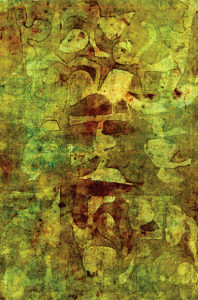
“People are leaning towards limited editions of sculptures as well. But there is a young crop of Indian collectors who are coming up and they want to collect fresh new medium art.”
Talking about this new breed, she explains that while different collectors invest differently, it’s easier for the younger lot to make smaller investments as it also means a smaller commitment. “They are still understanding whether they would actually like to focus on collecting, so the commitment is less. Whereas if you were to go for a Modern Master, then they are very difficult to get. Hence the commitment level is very high if you compare a Modern Master to a contemporary artist.”
Adding to this, Passi feels that contemporary artists are more relevant to our times. “The younger audiences, the younger generation, relate to them more, making it another factor.”
What Kakkar and Passi points out is on the same lines as the findings of research published in February 2018 by FICCI-KPMG.
According to a report titled ‘Visual Arts Industry in India: Painting the Future’, the Indian art industry garnered revenues totalling Rs 1,460 crore in 2017. The market had seen a decline of 6 per cent on account of the previous year’s demonetisation and implementation of the Goods and Services Tax (GST). Both taken together had their adverse effect on the art industry.
The report states that the Indian art industry is likely to see contemporary art sales picking up, supported by a diversified buyer base mostly in the age-group of 30-45 years. “The younger generation of Indians in their 30s and 40s are starting to drift away from modern artworks collected by their parents and focus on art of their own time. However, the focus is still on affordable art pieces, sales figures are yet to reflect the shift,” reads the report.
It also mentions that an increasing number of young art enthusiasts in their late 20s to early 40s are attending shows at art galleries and going to art exhibits and festivals, to both participate in workshops as well as buy original artwork.
BUCKING THE TREND
Contrary to most galleries, Wonderwall Gallery has seen a steady increase in sales figure in the past financial year. Dedicated to making fine art photography an accessible form of art to the public at large, Ajay Rajgaria attributes it to the affordable price range of the works exhibited in his gallery.
While on the whole there might be a slowdown, Rajgaria explains that it does not have much effect on the category he caters to. The “overpriced valuator” does not pertain to his gallery since, “Photography is not of such a high value, it’s not made a dent in my sales so to speak.”
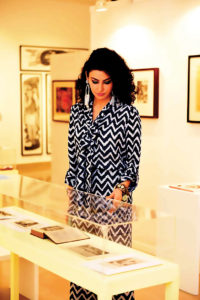
“The price point of the photographs starts from around Rs 25,000 and goes up to Rs 5 lakh. Hence the average price of a lot of the art that I sell would be Rs 50,000–75,000. So, in that sector I haven’t really seen much of a fall, because that’s not such a huge value item that people would not buy or delay purchasing,” explains Rajgaria.
Compared to the last couple of years, his sales number has seen an increase. “In 2020 its being going well and the biggest evaluator of that would be the India Art Fair. It was very good for us.” While Wonderwall’s sales were stagnant from 2016 to 2018, they saw an increase by 25 per cent in 2018-19 and when compared with 2019-20 (up to February), the figures shot up by 100%.
This brings us to the question as to why photography is recovering despite an overall economic crisis. Apart from it being economical, photography’s growing acceptance as a form of art is also a reason why sales are going up even when things overall are going down.
“As compared to previous generations to whom art was more about paintings, photography is getting popular. Along with this, the price points aren’t that high, even the younger generation can actually look at buying it and they are also more exposed to photography as an art. Even the newer generation of collectors who are coming up, who can’t afford pieces priced in lakhs are obviously more open to buying art in the range of Rs 30,000–50,000,” says Rajgaria.
Talking about collectors, Rajgaria feels that there has been a shift in the market from an investment-oriented mindset to a more collectible mindset. “Five years back, people were buying it from an investment mindset. Now people have realised that the art market is not as liquid as they think and there’s no short-term money to be made. Hence investors have gone out of the market and now only the collectors are left.”
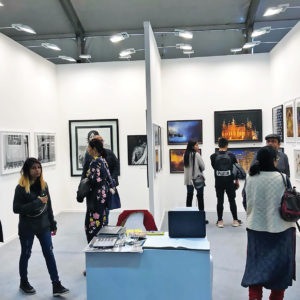
While the interest in contemporary art is on the rise it should be duly noted that modern masterpieces are still fetching crores of money. Take, for instance, VS Gaitonde’s untitled 1982 work that was sold at a whopping Rs 26.9 crore in an evening sale of auction house Saffronart in September 2019. In another one of their recent auction of Nirav Modi’s assets, one of MF Husaain’s painting titled, ‘Battle of Ganga and Jamuna: Mahabharata 12’ (1972) was sold for Rs 13 crores.
With all these positive indicators, one point that has been echoed by all gallery owners as well as collectors, is the growing interest in art. As Passi puts it rather philosophically, “I feel the focus should be on the view and not so much on the market because the idea is for people to just view art.”

